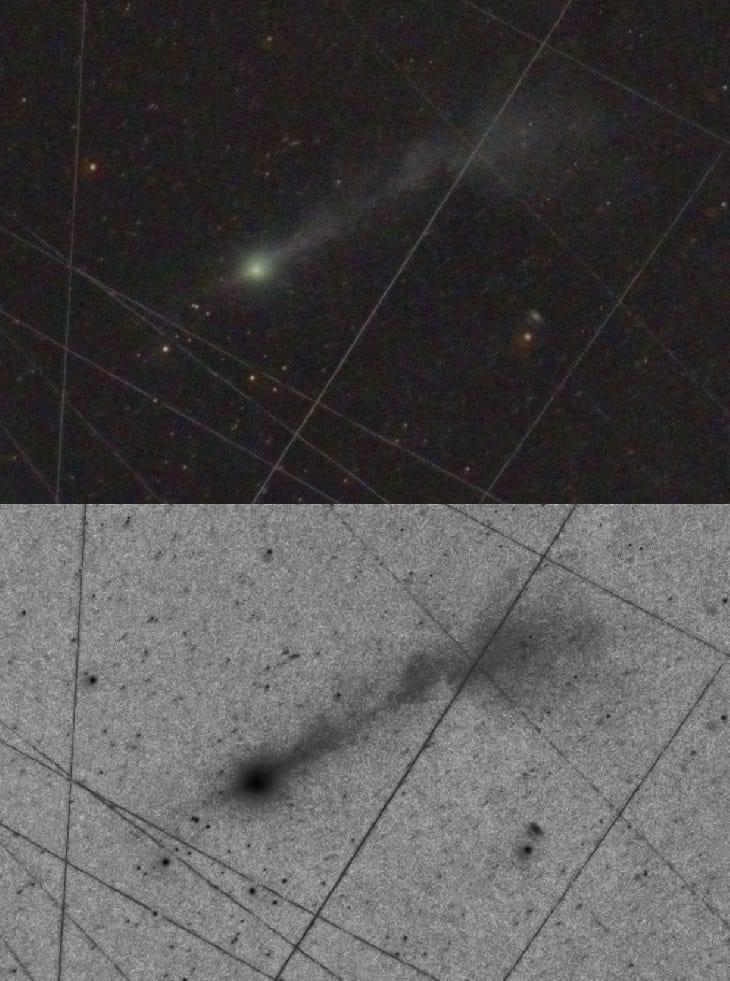The Moon has no atmosphere, no weather, and no wind.



We know of three interstellar objects (ISO) that have visited our inner Solar System. Oumuamua was the first one, and it came and went in 2017.
2l/Borisov, an interstellar comet, was next, appearing in 2019. And right now, the interstellar comet 3I/Atlas is enjoying a visit to the Sun-warmed inner Solar System.
A massive number of ISOs must have passed through our Solar System during its long, 4.6 billion-year history. It’s possible that some of them slammed into Earth.

Let me start this quantitative discussion with the conservative assumption that the interstellar object 3I/ATLAS is a natural comet, and work out its properties based on its latest post-perihelion image.
The large-scale image of 3I/ATLAS reported here on November 9, 2029 shows multiple jets reaching out to ~1 million kilometers towards the Sun and ~3 million kilometers in the opposite direction, as discussed here.
For a natural comet, the outflow velocity of the jets is expected to be 0.4 kilometers per second, of order the sound speed of gas at the distance of 3I/ATLAS from the Sun. At that speed, the jets must have persisted over a timescale of 1–3 months.
A new study proposes how we could look for signs of self-replicating (Von Neumann) probes that would prove that the Solar System has been explored by an advanced extraterrestrial intelligence (ETI).

The universe’s expansion may actually have started to slow rather than accelerating at an ever-increasing rate as previously thought, a new study suggests.
“Remarkable” findings published today in Monthly Notices of the Royal Astronomical Society cast doubt on the long-standing theory that a mysterious force known as ‘dark energy’ is driving distant galaxies away increasingly faster.
Instead, they show no evidence of an accelerating universe.



Veracode exposes npm package “@acitons/artifact” stealing GitHub tokens via build scripts.


GlobalLogic, a provider of digital engineering services part of the Hitachi group, is notifying over 10,000 current and former employees that their data was stolen in an Oracle E-Business Suite (EBS) data breach.
Based in Santa Clara, California, this software and product development services company was founded in 2000. Since then, it has expanded to 59 product engineering centers and several offices worldwide.
In a breach notification letter filed with the office of Maine’s Attorney General, the company states that the attackers exploited an Oracle EBS zero-day vulnerability to steal personal information belonging to 10,471 employees.